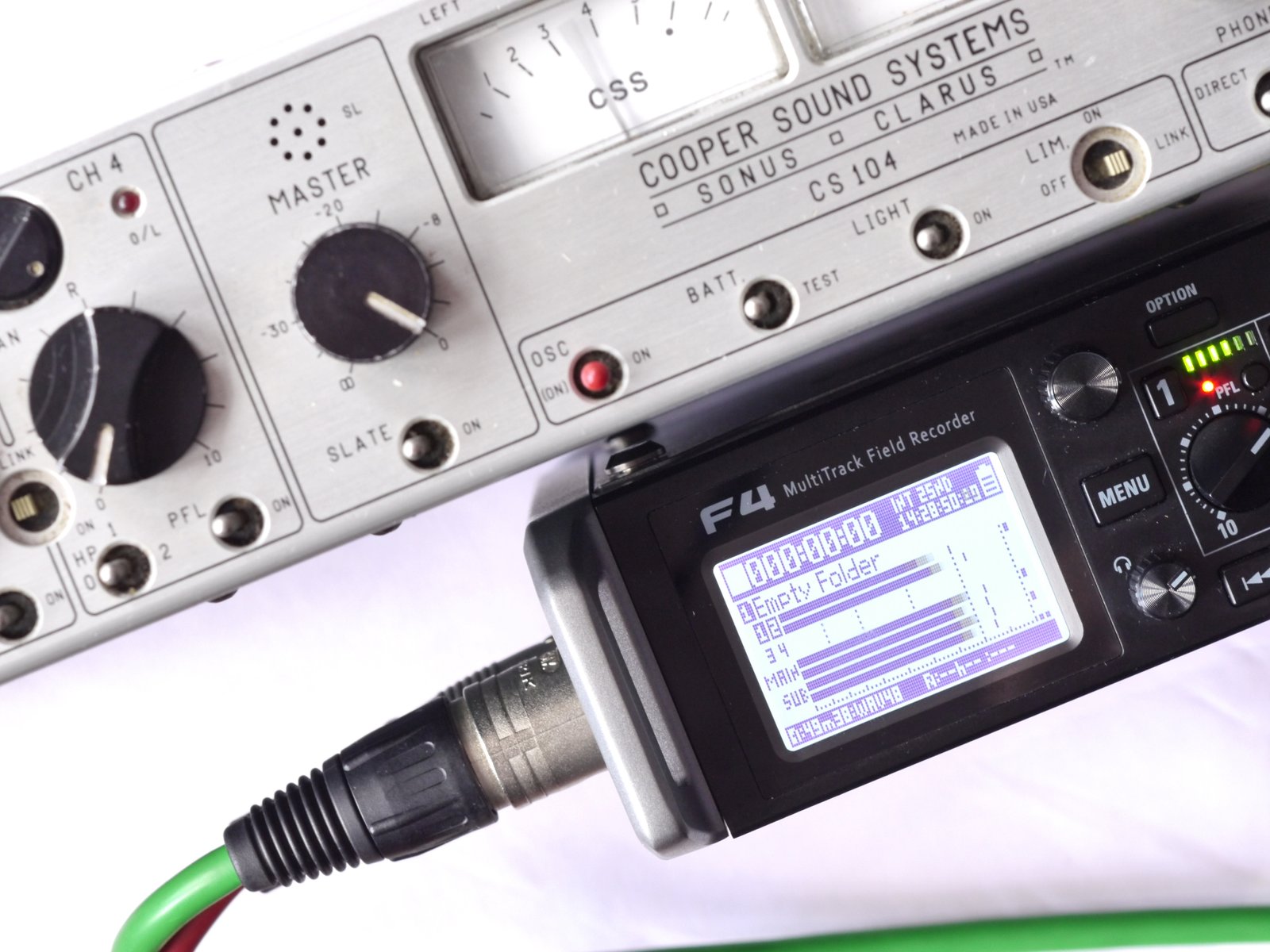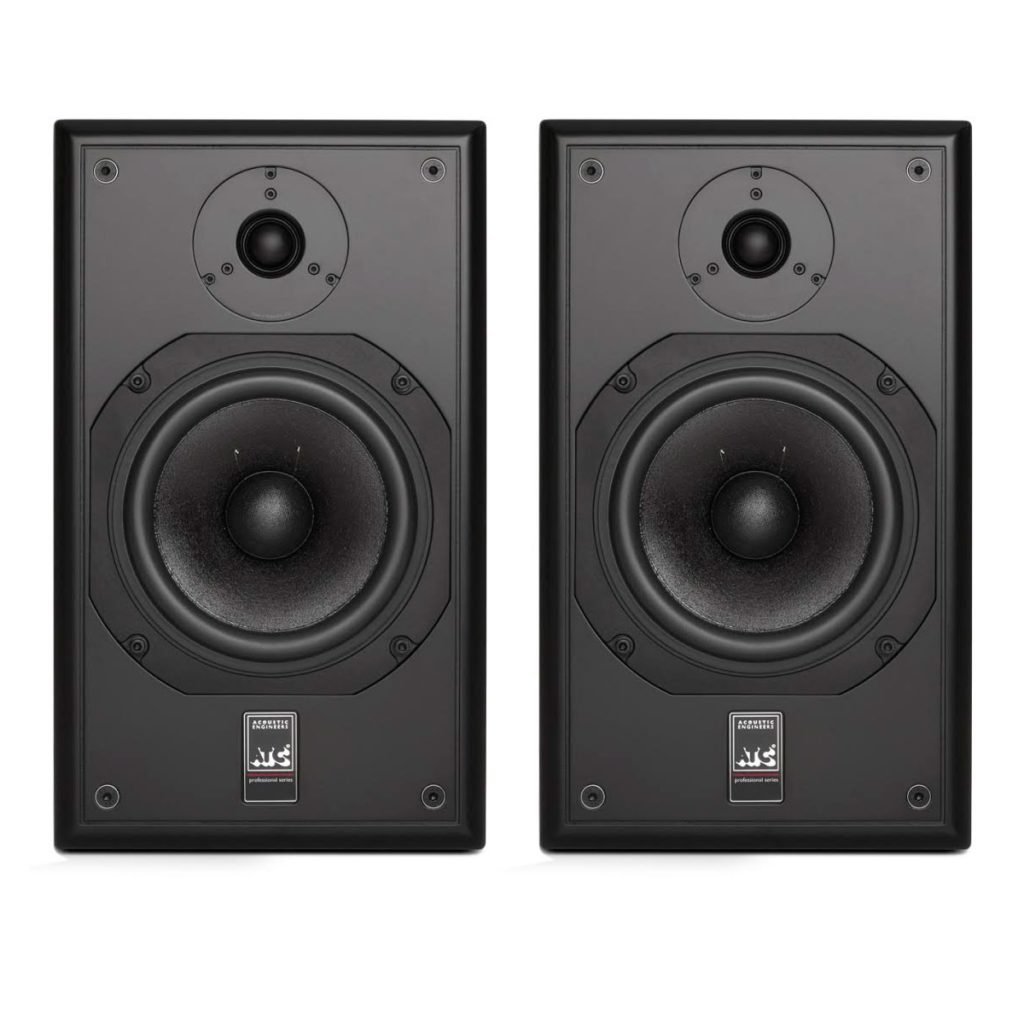If you were making a check list for a modern compact near field monitor – what would be the givens? Well first it would be active, unlike the hifi market, studio monitoring has long since embraced the active route. Secondly small drive units, 100 or 125mm ( four or five inches in old money) for the mid/bass driver, and to go with the smaller drivers narrow baffles. And because we have selected a smaller drive unit then a ported design will deliver the low end extension we would otherwise struggle to achieve with our smaller mid/bass unit. Whether as a result of solid engineering choices or mere fashion, that blue print covers a sizable amount of the near field monitors available to the market right now.
Obviously ATC have a very different checklist! The SCM 12 Pro is the latest ATC nearfield monitor and it checks none of the boxes! Except being relatively compact. First is it a passive speaker and that is probably the most remarkable thing about it, given both the state of the market and the role of ATC at the forefront of the introduction of active monitoring. Secondly the 150mm (six inch) mid/bass driver means the cabinet is wider and indeed just bigger than many of its rivals. Remember this is the entry point into the ATC range. And thirdly the ATC is an infinite baffle design, no ports or transmission lines for the SCM 12 – this is a sealed box.
So what were ATC thinking when they put together the SCM 12 Pro? Well first the 12 is a response to a market requirement. As the number of monitors increases in surround installations so some studios have looked to the live model for the install where all the electronics sits in one central rack – and you can see that systems with maybe 9 or 11 monitor speakers that brings a certain amount of rationality to the install and indeed the ergonomics of the set up. Secondly as the entry point model a passive speaker is considerably cheaper than an active model and with many studios having decent power amps kicking around it is a way of getting a foot on the ATC ladder while not breaking the bank. Though you do have to dent it a bit! So if you have a tidy heft of amp warming your feet while driving a pair of NS 10s that have seen better days – well the SCM 12 is aimed fairly at you.
But hang on – I hear you say – ATC are pioneers of active and everyone agrees that a well designed active system enjoys considerable advantages over a similar passive system. So shouldn’t an active system from Brand X outperform the ATC passive offering at or near the same price point? Well the devil here is in the detail. Many modern active systems include amplifiers with switch mode power supplies and ATC consider that a compromise that they are unwilling to make – their amps are all class A/B and more of that later. The second point in the active / passive debate is that the acid test is in the listening – the complexities of speaker design are such that merely being active doesn’t necessarily bring home the audio bacon – you have to sit down and listen. So drag out your old Bryston, connect up your QED 79 strand (coz you never really bought into that cable stuff? Did you?) and fire up the SCM 12 Pros.
Better monitors reveal themselves in all sorts of different ways. First you hear things you hadn’t heard before – often go back to your old monitors knowing that something is there and you will hear it – it was Obscured by Clouds before. These are dynamic effects – loud things and quiet things happen at the same time and on good monitors we hear both in context without masking. And music of course relies on subtle effects in dynamics – you want those preserved in mixing so you can manipulate them or just appreciate them. Edges are important, the leading edge carries lots of information and getting our cones moving from a standing start is tricky – a decent monitor needs to preserve dynamics and faithfully trace the transient edges of our signals. Not forgetting of course bandwidth we want to hear the high highs and the low lows and we want them to be free of distortion, we want the top end to shine but only when shine goes in – if what goes in is nasty spikey zip then that’s what should come out. And similarly our bass should not be waffling away in resonance just because we have a vague notion that more is better in the bottom octaves. And in a studio monitor we need balance – it’s no good having a speaker that excels in some of these areas while ignoring others – a monitor shouldn’t be about making you feel good – while something disastrous is happening in your mix and you can’t hear it. And finally there’s musicality – I’m sorry to use a word that is so hard to define and has been so much abused, but a great monitor allows music out in a way that satisfies the musical intention of the audio that went in at the terminals.
So what do the ATC SCM 12 Pros sound like? Very, very good. They excel in dynamic stability – loud things go loud without treading all over quiet things, if your percussionist likes sly effects and cheeky delicacies – you will hear them. If your drummer mixes rock thunder with jazz accents you will smile – and if she makes it swing you will hear it swing. The beat tightens and rhythmic intentions become clear. Layers in EDM will be laid bare – synth tones revealed – backing vocals resolve out of the soup of lesser systems. The bottom end is a lesson in control – less is more when bass has actual notes, and the notes have actual character! Who would have thought it. But it is the mid band clarity that stands out for me – vocals just sound more… more like the singer – and everywhere a clarity that makes much of the competition sound veiled. I’m left reaching for the m word – musicality abounds. I find myself smiling more.
Driving them? Well ATC sent me their P1 Pro 150 watt dual mono class A/B mosfet amp. It’s a killer amp and I believe a bit of a bargain. You could easily pay twice this amount in hifi world and not get as good performance. The 12 Pros take a bit of driving, they are an easy load but suck up the volts. To put the whole system through the wringer and try out some options and alternatives, I blagged a session in Audio T‘s listening room (thanks Hefin) to try the ATC’s with the new Nytech 402 poweramp to see if less power would work. Phil Balaam’s new Nytech 402 is forty watts of pure Welsh goodness per channel, enough to drive the ATC loud and clear and make them sing, and you would save a few quid on the P1.
However, if you really want to burn some rubber and if you need to turn it up to 11 on a regular basis – shell out for a P1 Pro, pardon? The combination goes very loud indeed. There’s a bit of a buzz round the P1 (excuse the pun) in certain hifi circles and I can certainly see why. It’s a lot of amp for the dosh. Dropping some alternative speakers into the mix (but not dropping any names) highlights the ATC’s studio monitor qualities – these speakers tell no little white lies – they aim resolutely for resolution.
As you can probably tell I have been massively impressed by the SCM 12 Pros – defying mere fashion they are an evolutionary product from a company that refuses to compromise engineering decisions for marketing acceptability. They are a professional tool designed for use in a working studio environment. The finish is utilitarian but the sound extraordinary, if you need compact monitors that tell the unvarnished truth about your audio. Start here.



